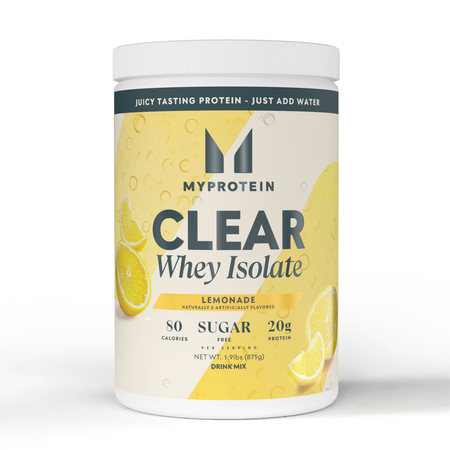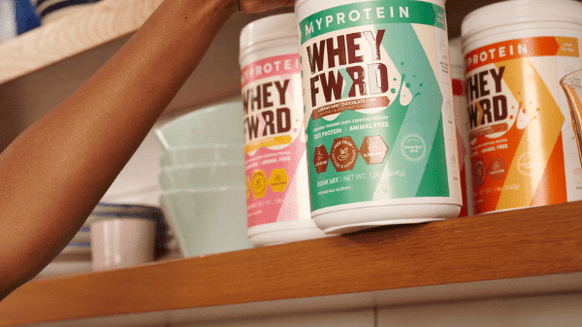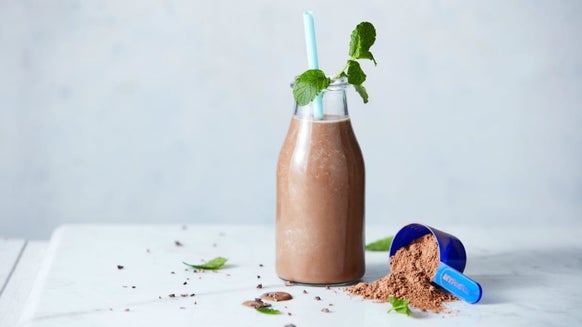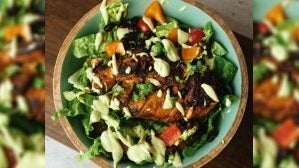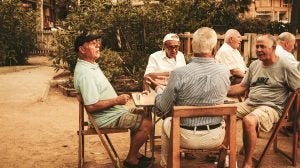
Have you ever wondered why some places in the world boast a significantly longer life expectancy than others? You’re not the only one. These areas, known as “blue zones”, have been studied extensively by researchers, who have tried to find out the secrets to their inhabitants’ prolonged good health.
What are Blue Zones?
Blue zones are geographical hotspots known for having exceptionally high life expectancies compared to the rest of the world.1 Inhabitants of blue zones often live happily into their hundreds, almost 20 years longer than the Canada average.2
Explorer and journalist Dan Buettner was one of the first to identify these regions and study why their inhabitants live such long lives. In 2004, he and his team identified five areas across the world with notably long life expectancy.3
Where are the 5 Blue Zones?
Sardinia, Italy
This blue zone is home to the world's highest population of men living into their 100s. The mountainous terrain encourages an active lifestyle and the diet features plenty of whole grains and plant-based foods, with meat reserved for the occasional treat.
Okinawa, Japan
Okinawa, the fifth-largest Japanese island, is known for having the world’s longest-living women. Strong social networks and a sense of community are thought to be a potential reason for this longevity. It’s well established that loneliness and social isolation are linked to an increased chance of early death.4,5,6,7
However, it's worth noting that life expectancy has been falling in the region, possibly due to the increasing popularity of Western-style diets.8
Nicoya, Costa Rica
Nicoyans place great importance on faith and family, and their "reason to live" (plan de vida) keeps older members of the community active far into their later years, which can improve life expectancy.9,10 Their diet contains little to no processed foods, and they consume tropical fruits rich in essential nutrients, fibre and antioxidants.
Ikaria, Greece
Ikaria, one of the Greek islands, boasts lower rates of serious disease compared to other regions.3,11 Its inhabitants eat a typical Mediterranean diet of fruits, vegetables, whole grains, olive oil, and pulses, and the collective fondness for afternoon naps may also play a part in good health.12
Loma Linda, California
The Seventh-day Adventist community in Loma Linda, California on average live a decade longer than their compatriots.3 Their predominantly vegetarian diet includes leafy greens, nuts, and legumes, and they live in tight-knit communities. Weekly breaks for the Sabbath encourage plenty of opportunity for rest and religious reflection.
Common Nutrition Factors in Blue Zones
Fresh Fruit & Veg
Most blue zone diets are predominantly plant-based, with little meat and plenty of fruit and vegetables.3
Eating more than five servings of fruits and vegetables daily has been associated with a lower risk of serious disease.13,14,15 These foods also provide essential vitamins, minerals, and antioxidants, which protect against oxidative stress, a contributor to many of these diseases.16,17
Plant Protein
Although many blue zone inhabitants do eat meat, legumes like lentils, beans, and peas, and soy products are often the primary source of protein. These foods also tend to be high in fibre.
Oily fish, typical of the Mediterranean diets of Sardinia and Ikaria, provide plenty of heart-healthy omega-3s.18,19,20,21 Red and processed meats — widely considered bad for health — are consumed sparingly or not at all.22,23,24,25
Plenty of Fibre
Blue zone diets feature plenty of whole grains, nuts, and seeds, all rich in fibre. Fibre supports the gut by keeping us regular and maintaining good gut health, which can help prevent the development of serious health conditions.26,27,28,29,30
That’s not all fibre’s good for though. High-fibre diets are also linked to a lower risk of heart disease, as fibre helps to lower cholesterol absorption.31,32
Fabulous Polyphenols
Polyphenol-rich foods, like berries, grapes, turmeric, red wine, coffee, and cocoa, are staples in many blue zone diets. Extra virgin olive oil, abundant in polyphenols, is the fat of choice in Sardinia and Ikaria.33
Flavonoids, a type of polyphenol, act as potent antioxidants and boost heart health.34 Cannonou, Sardinia’s local wine, stands out for its exceptionally high flavonoid content.3
Blue Zone Lifestyles
Strong Social Bonds
The importance of family and community is a trait shared by all the blue zones. Frequent socializing has been linked with extended lifespan.6,7,35
Staying Active
Exercise is woven into the daily life of blue zone inhabitants from early years into old age. Regular physical activity is not only good for physical health but also mental health and overall quality of life. 36 Even low-volume activity can significantly extend life expectancy and lower the risk of all-cause mortality.37
Balance
Blue zone cultures all have a healthy work-life balance, with family always the priority. Taking time to unwind can reduce overall physical and psychological stress, which has a positive effect on health.38,39
Blue Zone FAQs
Do eggs feature much in blue zone diets?
Yes, eggs are regularly consumed in blue zone diets. Contrary to some beliefs, evidence shows that cholesterol is not as bad as once believed.40,41
Do people in blue zones drink alcohol?
Moderate alcohol consumption is common in many blue zones and may offer some health benefits. Wine, in particular, is rich in flavonoids and can have sedative effects, potentially reducing stress levels.34
However, recent research suggests that moderate alcohol consumption may actually not have that many benefits.42
Do people in blue zones drink coffee?
Coffee is a regular feature of blue zone diets. When consumed in moderate amounts, it is associated with reduced risks of certain health conditions.43
Is there a blue zone in Canada?
No, there is currently no officially recognized blue zone in Canada.
Take home message
While blue zones offer valuable insights into what leads to long, healthy, happy lives, it’s impossible to pinpoint exactly what the reasons are.
Diets and active lifestyles deeply rooted in tradition and culture clearly play a significant role, but that doesn’t necessarily mean that we will live into our hundreds if we were to adopt them wholesale.
But while it’s near impossible to guarantee you can live happily into your hundreds, there are things you can do to help protect your health and well-being as you get older.
- Reduce intake of red and processed meat.
- Eat more whole grains, legumes, and pulses in your diet.
- Replace saturated fats with unsaturated fats, like olive oil and oily fish.
- Limit alcohol consumption.
- Get plenty of rest and relaxation.
- Make time for family and friends.
You may not be able to guarantee a long life, but by embracing these behaviours you may be able to live a healthier, happier life. And that’s what matters most, isn’t it?
READ THESE NEXT:

10 Reasons Why You Bloat & How To Minimize It
Expert tips from a nutritionist....

5 Maca Benefits | What Is Maca Root & What Does It Do?
Feeling tired? This supplement might be what you've been looking for....

What Should I Eat 30 Minutes Before A Workout?
Nutritionist reveals how to fuel right....

- Buettner, Dan, and Sam Skemp. “Blue zones: lessons from the world’s longest lived.” American journal of lifestyle medicine 10, no. 5 (2016): 318-321.
- https://datacommons.org/place/country/CAN/?utm_medium=explore&mprop=lifeExpectancy&popt=Person&hl=en
- History of Blue Zones. Retrieved on 14 September 2022 from: https://www.bluezones.com/about/history/
- Holwerda, Tjalling J., Theo G. Van Tilburg, Dorly JH Deeg, Natasja Schutter, Rien Van, Jack Dekker, Max L. Stek, Aartjan TF Beekman, and Robert A. Schoevers. “Impact of loneliness and depression on mortality: results from the Longitudinal Ageing Study Amsterdam.” The British Journal of Psychiatry 209, no. 2 (2016): 127-134.
- Holt-Lunstad, Julianne, Timothy B. Smith, Mark Baker, Tyler Harris, and David Stephenson. “Loneliness and social isolation as risk factors for mortality: a meta-analytic review.” Perspectives on psychological science 10, no. 2 (2015): 227-237.
- Valtorta, Nicole K., Mona Kanaan, Simon Gilbody, Sara Ronzi, and Barbara Hanratty. “Loneliness and social isolation as risk factors for coronary heart disease and stroke: systematic review and meta-analysis of longitudinal observational studies.” Heart 102, no. 13 (2016): 1009-1016.
- Gavrilova, Natalia S., and Leonid A. Gavrilov. “Comments on dietary restriction, Okinawa diet and longevity.” Gerontology 58, no. 3 (2012): 221-223.
- Arem H, Moore SC, Patel A, et al. Leisure time physical activity and mortality: a detailed pooled analysis of the dose-response relationship. JAMA Intern Med. (2015).175(6):959-967. doi:10.1001/jamainternmed.2015.0533
- Dionigi, Rylee A. “Stereotypes of aging: Their effects on the health of older adults.” Journal of Geriatrics 2015 (2015).
- Legrand, Romain, Gilles Nuemi, Michel Poulain, and Patrick Manckoundia. “Description of lifestyle, including social life, diet and physical activity, of people≥ 90 years living in Ikaria, a longevity blue zone.” International journal of environmental research and public health 18, no. 12 (2021): 6602.
- Xin, Chunyu, Baiyang Zhang, Shu Fang, and Junmin Zhou. “Daytime napping and successful aging among older adults in China: a cross-sectional study.” BMC geriatrics 20 (2020): 1-12.
- Wang, X., Ouyang, Y., Liu, J., Zhu, M., Zhao, G., Bao, W., & Hu, F. B. (2014). Fruit and vegetable consumption and mortality from all causes, cardiovascular disease, and cancer: systematic review and dose-response meta-analysis of prospective cohort studies. BMJ (Clinical research ed.), 349, g4490. https://doi.org/10.1136/bmj.g4490
- He, Feng J., Caryl Anne Nowson, Mn Lucas, and Graham A. MacGregor. “Increased consumption of fruit and vegetables is related to a reduced risk of coronary heart disease: meta-analysis of cohort studies.” Journal of human hypertension 21, no. 9 (2007): 717-728.
- Crowe, Francesca L., Andrew W. Roddam, Timothy J. Key, Paul N. Appleby, Kim Overvad, Marianne U. Jakobsen, Anne Tjønneland et al. “Fruit and vegetable intake and mortality from ischaemic heart disease: results from the European Prospective Investigation into Cancer and Nutrition (EPIC)-Heart study.” European heart journal 32, no. 10 (2011): 1235-1243.
- Lobo, Vijaya, Avinash Patil, A. Phatak, and Naresh Chandra. “Free radicals, antioxidants and functional foods: Impact on human health.” Pharmacognosy reviews 4, no. 8 (2010): 118.
- Liguori, Ilaria, Gennaro Russo, Francesco Curcio, Giulia Bulli, Luisa Aran, David Della-Morte, Gaetano Gargiulo et al. “Oxidative stress, aging, and diseases.” Clinical interventions in aging (2018): 757-772.
- Tartibian, B., Maleki, B. H., & Abbasi, A. (2011). Omega-3 fatty acids supplementation attenuates inflammatory markers after eccentric exercise in untrained men. Clinical Journal of Sport Medicine, 21(2), 131-137.
- Corder, K. E., Newsham, K. R., McDaniel, J. L., Ezekiel, U. R., & Weiss, E. P. (2016). Effects of short-term docosahexaenoic acid supplementation on markers of inflammation after eccentric strength exercise in women. Journal of sports science & medicine, 15(1), 176.
- Punia, Sneh, Kawaljit Singh Sandhu, Anil Kumar Siroha, and Sanju Bala Dhull. “Omega 3-metabolism, absorption, bioavailability and health benefits–A review.” PharmaNutrition 10 (2019): 100162.
- Kris-Etherton, Penny M., Chesney K. Richter, Kate J. Bowen, Ann C. Skulas-Ray, Kristina Harris Jackson, Kristina S. Petersen, and William S. Harris. “Recent clinical trials shed new light on the cardiovascular benefits of omega-3 fatty acids.” Methodist DeBakey cardiovascular journal 15, no. 3 (2019): 171.
- Hur, Sun Jin, Yohan Yoon, Cheorun Jo, Jong Youn Jeong, and Keun Taik Lee. “Effect of dietary red meat on colorectal cancer risk—a review.” Comprehensive reviews in food science and food safety 18, no. 6 (2019): 1812-1824.
- Mattiuzzi, Camilla, and Giuseppe Lippi. “Epidemiologic burden of red and processed meat intake on colorectal cancer mortality.” Nutrition and Cancer 73, no. 4 (2021): 562-567
- Surya, Reggie. “Mechanistic hypotheses on colorectal cancer and red meat intake: a review.” In IOP Conference Series: Earth and Environmental Science, vol. 426, no. 1, p. 012176. IOP Publishing, 2020.
- Surya, Reggie. “Mechanistic hypotheses on colorectal cancer and red meat intake: a review.” In IOP Conference Series: Earth and Environmental Science, vol. 426, no. 1, p. 012176. IOP Publishing, 2020.
- Hemmati, Maryam, Setayesh Kashanipoor, Payman Mazaheri, Farnaz Alibabaei, Ali Babaeizad, Shima Asli, Sina Mohammadi et al. “Importance of gut microbiota metabolites in the development of cardiovascular diseases (CVD).” Life Sciences (2023): 121947.
- Tan, Chuhong, Qiheng Wu, Huidi Wang, Xuxuan Gao, Ruoting Xu, Ziming Cui, Jiajia Zhu et al. “Dysbiosis of gut microbiota and short‐chain fatty acids in acute ischemic stroke and the subsequent risk for poor functional outcomes.” Journal of parenteral and enteral nutrition 45, no. 3 (2021): 518-529.
- Miyoshi, Jun, Sawako Miyoshi, Tom O. Delmont, Candace Cham, Sonny TM Lee, Aki Sakatani, Karen Yang et al. “Early-Life Microbial Restitution Reduces Colitis Risk Promoted by Antibiotic-Induced Gut Dysbiosis in Interleukin 10–/–Mice.” Gastroenterology 161, no. 3 (2021): 940-952.
- Raoul, Pauline, Marco Cintoni, Marta Palombaro, Luisa Basso, Emanuele Rinninella, Antonio Gasbarrini, and Maria Cristina Mele. “Food additives, a key environmental factor in the development of IBD through gut dysbiosis.” Microorganisms 10, no. 1 (2022): 167.
- Kayser, Brandon D., Edi Prifti, Marie Lhomme, Eugeni Belda, Maria-Carlota Dao, Judith Aron-Wisnewsky, Anatol Kontush, Jean-Daniel Zucker, Salwa W. Rizkalla, and Isabelle Dugail. “Elevated serum ceramides are linked with obesity-associated gut dysbiosis and impaired glucose metabolism.” Metabolomics 15 (2019): 1-13.
- Alfaddagh, Abdulhamied, Seth S. Martin, Thorsten M. Leucker, Erin D. Michos, Michael J. Blaha, Charles J. Lowenstein, Steven R. Jones, and Peter P. Toth. “Inflammation and cardiovascular disease: From mechanisms to therapeutics.” American journal of preventive cardiology 4 (2020): 100130.
- Evans, Charlotte Elizabeth Louise. “Dietary fibre and cardiovascular health: a review of current evidence and policy.” Proceedings of the Nutrition Society 79, no. 1 (2020): 61-67.
- Chrysohoou, Christina, Christos Pitsavos, George Lazaros, John Skoumas, Dimitris Tousoulis, and Christodoulos Stefanadis. “Determinants of all-cause mortality and incidence of cardiovascular disease (2009 to 2013) in older adults: The Ikaria study of the blue zones.” Angiology 67, no. 6 (2016): 541-548.
- Meccariello, Rosaria, and Stefania D’Angelo. “Impact of polyphenolic-food on longevity: an elixir of life. An overview.” Antioxidants 10, no. 4 (2021): 507.
- Takatori, Katsuhiko, and Daisuke Matsumoto. “Effects of social activity participation and trust in the community on the transition of frailty classification in late-stage older adults: a 4-year prospective cohort study.” BMJ open 13, no. 5 (2023): e072243.
- Schrader, Bastian, Anna-Maria Bünker, Charis Conradi, Stephan Lüders, Bernhard Vaske, Michael Koziolek, Hermann Haller, Albrecht Elsässer, and Joachim Schrader. “Regular exercise is associated with a more favorable cardiovascular risk profile, better quality of life, less depression and less psychological stress.” International Journal of General Medicine (2022): 545-554.
- Veerman, J. Lennert, Jan J. Barendregt, and Linda J. Cobiac. “Exercise and life expectancy.” The Lancet 379, no. 9818 (2012): 799.
- O’Connor, Daryl B., Julian F. Thayer, and Kavita Vedhara. “Stress and health: A review of psychobiological processes.” Annual review of psychology 72 (2021): 663-688.
- Yu, Jongsik, Junghyun Park, and Sunghyup Sean Hyun. “Impacts of the COVID-19 pandemic on employees’ work stress, well-being, mental health, organizational citizenship behavior, and employee-customer identification.” Journal of Hospitality Marketing & Management 30, no. 5 (2021): 529-548.
- Fernandez, Maria L. “Rethinking dietary cholesterol.” Current Opinion in Clinical Nutrition & Metabolic Care 15, no. 2 (2012): 117-121.
- Soliman, Ghada A. “Nutrition and cholesterol metabolism.” In Cholesterol, pp. 371-402. Academic Press, 2022.
- Stockwell T, Zhao J, Panwar S, Roemer A, Naimi T, Chikritzhs T. Do “Moderate” Drinkers Have Reduced Mortality Risk? A Systematic Review and Meta-Analysis of Alcohol Consumption and All-Cause Mortality. J Stud Alcohol Drugs. 2016;77(2):185-198. doi:10.15288/jsad.2016.77.185
- Barrea, Luigi, Gabriella Pugliese, Evelyn Frias-Toral, Marwan El Ghoch, Bianca Castellucci, Sebastián Pablo Chapela, María de los Angeles Carignano et al. “Coffee consumption, health benefits and side effects: a narrative review and update for dietitians and nutritionists.” Critical reviews in food science and nutrition 63, no. 9 (2023): 1238-1261.
